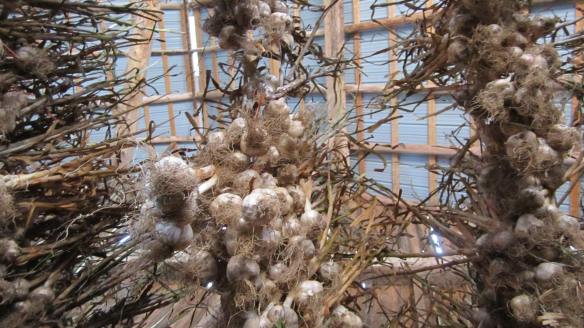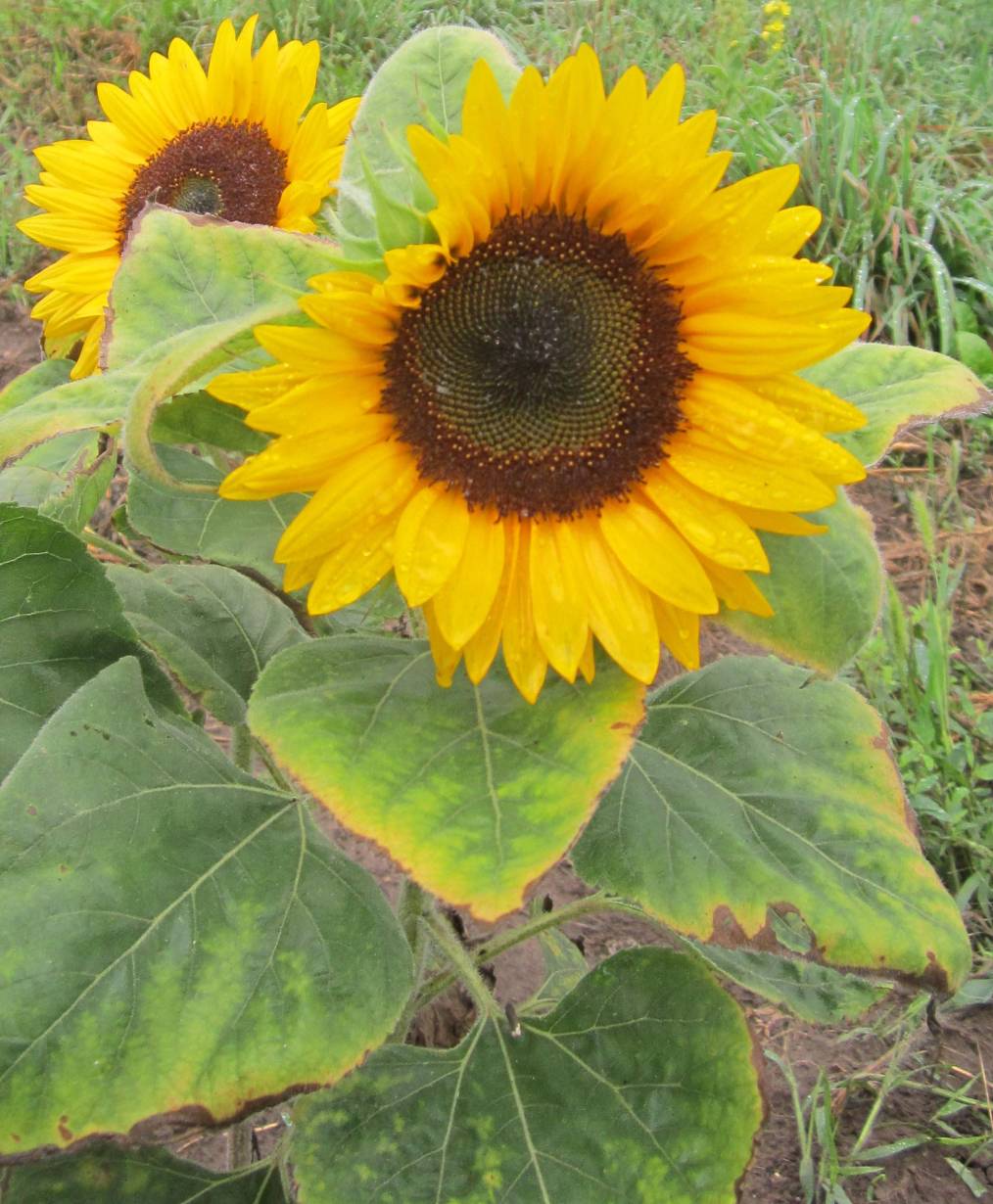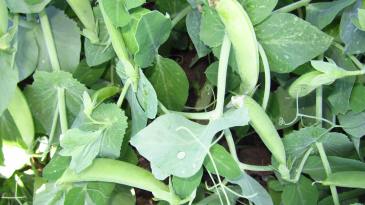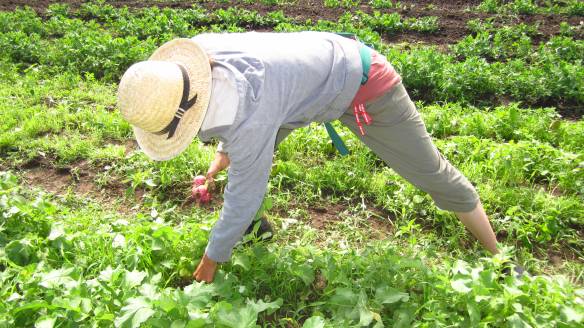 Days and days these past few weeks have been garlic filled, and I’ve had time to contemplate this crop. How it stays with us for the whole year, transforming itself to fit the seasons, and finally gifting us with a precious, pungent, paper-wrapped bouquet of flavour.
Days and days these past few weeks have been garlic filled, and I’ve had time to contemplate this crop. How it stays with us for the whole year, transforming itself to fit the seasons, and finally gifting us with a precious, pungent, paper-wrapped bouquet of flavour.
In the spring, green garlic was one of the first crops we harvested in the field to sell alongside our greenhouse greens and storage vegetables. A cross between a green onion and a leek and rich with quiet garlicky flavour, green garlic is the whole plant before the scape forms on top and the bulb forms below. The fall before, a bed of garlic bulbs had been left behind, making an unplanned-for spring treat. We harvested these beds for green garlic, and still had rows and rows (and rows and rows and rows) of garlic growing.
 By June, this garlic was scaping, and we rushed to catch it. To ensure that the plant puts its energy into the precious bulb, a necessary step in growing garlic is to cut off the scape before it flowers. Form and function meet, for the scape itself is a delicacy, giving its gentle flavour to garlic scape pesto, pickled garlic scapes, barbecued garlic scapes, and everything else we cooked for the next several weeks.
By June, this garlic was scaping, and we rushed to catch it. To ensure that the plant puts its energy into the precious bulb, a necessary step in growing garlic is to cut off the scape before it flowers. Form and function meet, for the scape itself is a delicacy, giving its gentle flavour to garlic scape pesto, pickled garlic scapes, barbecued garlic scapes, and everything else we cooked for the next several weeks.
At the end of July, the scapes had been scaped, the garlic had been growing through the heat and the drought, and a quick look showed us dried leaves, or papers, at the stems of the plants, an indication that the garlic bulbs are ready to be harvested. The whole farm team worked together in the field, … except me. Garlic harvest was a couple of days after the epic foot injury, and I did in fact spend a few hours serving as a tractor weight before the pain sent me back to the house and eventually back to the hospital for another x-ray, and most of you know the rest of that story (99% recovered now!) From inside the house, I enjoyed tales of garlic harvesting, a process that went a lot faster this year with the tractor-powered garlic digger than with hand digging. Fresh garlic needs to be handled gently; its tender flesh is easily bruised. The garlic was collected and hung up in both farm barns to cure. Some was sold as fresh garlic right away – one of my first tasks once I could walk to the shed was to clean the outer papers off the garlic for sale.
 And now, the garlic has cured; the more pressing tasks like harvesting onions and winter squash are out of the way; and every moment we have is being spent processing garlic. First the garlic that we’ll store and sell over the fall and winter: we’re cutting it down from the barns, and cutting off each bulb, then trimming the bulb hairs and peeling off the outer papers – any dirt left on the bulb can hold moisture and make the garlic more vulnerable to spoiling. We grade the garlic by size, for there are tiny ones the diameter of a quarter, and extra extra larges, and we sort out the ones that are for “home” – not saleable but still eatable.
And now, the garlic has cured; the more pressing tasks like harvesting onions and winter squash are out of the way; and every moment we have is being spent processing garlic. First the garlic that we’ll store and sell over the fall and winter: we’re cutting it down from the barns, and cutting off each bulb, then trimming the bulb hairs and peeling off the outer papers – any dirt left on the bulb can hold moisture and make the garlic more vulnerable to spoiling. We grade the garlic by size, for there are tiny ones the diameter of a quarter, and extra extra larges, and we sort out the ones that are for “home” – not saleable but still eatable.
And yesterday and today, the seed garlic: Half a bed of garlic was left in the field an extra two weeks, so that for most plants the papers all around the bulb dried out, leaving only exposed cloves. These need no gentle cleaning and grading. Instead, a quick cut and pull apart of each clove. Tossed into a pile of potato sacks, this is a precious load, the progenitors of next year’s garlic crop.
In a couple more days, we’ll be out in the garlic fields again to plant the cloves that will spend the winter in the soil and emerge as green garlic, and then eventually send out scapes, and grow into those precious garlic bulbs that we’ll harvest next year, carrying with them a little bit of the story of this year.


















